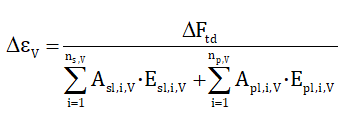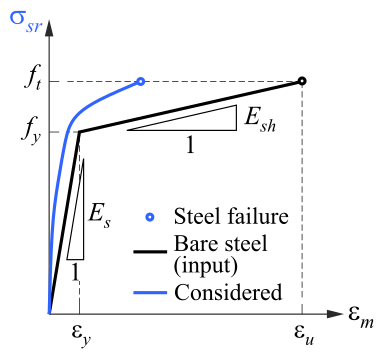GMNIA solver extended to shear and torsion effects
Shear and torsion code-based check
We want to enable our customers to work quickly and efficiently. So that engineers do not have to divide the structure in a complicated way and have all the checks in one place, we have implemented a simplified method for calculating the stresses in longitudinal reinforcement due to shear and torsion in IDEA StatiCa Member.
The method is based on the principle of nonlinear increments. During the analysis, the solver is automatically adding the percentual increments of the load effects to the longitudinal reinforcement.
Additional force in the longitudinal reinforcement due to shear is determined according to the following formula:
For evaluating strain increment due to shear, the formula below was used:
And for the determination of the strain increment due to torsion, this formula:
Be aware that GMNA doesn't include the shear check. For such an assessment, the linear analysis must be run.
Tension stiffening effect
Tension stiffening effect - method for the calculation of the reinforcement ratio, which you may know from the IDEA StatiCa Detail application, has been also implemented in the IDEA StatiCa Member application. The method uses a stress-strain diagram for reinforcement with the tension stiffening effect for GMNA analysis.
The main assumptions of the tension stiffening effect are:
- It does not affect strength.
- Increase the stiffness = reduce the deflections.
- Reduction of the ductility of the structure.
Available in both Expert and Enhanced editions of IDEA StatiCa Concrete and Prestressing.




